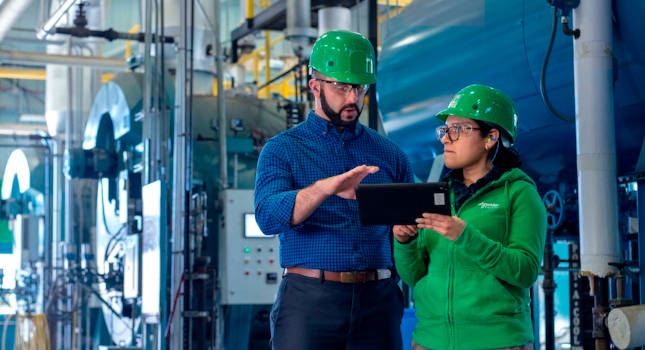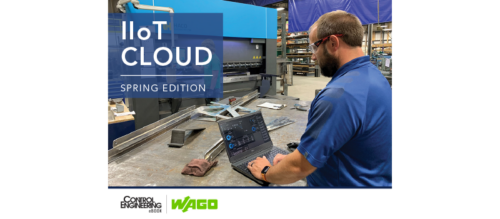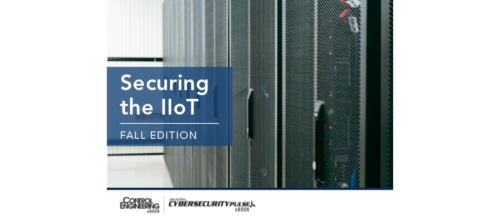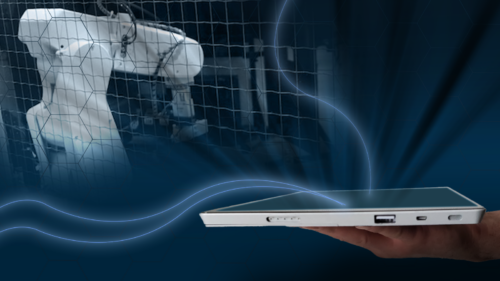Universal automation lays the foundation for smart factories
Universal automation can help make smart factories a reality in process industries and giving users more freedom and flexibility in their day-to-day activities.
Learning Objectives
- Understand the shift toward the smart factory and the challenges process manufacturers face.
- Learn how IEC 61499 and IEC 61131-3 are impacting universal automation.
- Learn about universal automation’s benefits and how technology such as Ethernet-APL and edge devices will improve users’ intelligence.
Smart factory and automation insights
Distributed control system (DCS) users are working toward eliminating the proprietary nature of automation and working toward a universal standard for process control industries.
Universal automation is based on IEC 61499 and is designed to decouple hardware and software by addressing single-vendor lock-in, which remains a hurdle in the process industry.
Companies and engineers embedded in the programmable logic controller (PLC) and distributed control system (DCS) world might not the changes coming on the factory floor and might not be ready for what is coming in the future.
While the DCS world is clamoring for open process control and the elimination of proprietary control, we hear barely a peep about this in the PLC world. Those involved seem complacent within the proprietary world and accept the shortcomings as part of their world.
In the DCS world, there are a few big-name customers who are standing up and demanding the process control world do better by developing automation standards that disconnect the software from the hardware, eliminating the proprietary nature of automation. They are not alone.
While there are many technological shortcomings in automation, but universal automation might provide the foundational step to move the industry forward. Universal automation is a disruptive technology based on the IEC 61499 standard for interoperability and portability that decouples hardware and software by addressing one of the industry’s largest challenges to innovation — single-vendor lock-in.
The future smart factory
Companies and users need to ask if they have a vision of what the smart factory will look like in five to 10 years. How will devices be connected? Will companies be dealing with vendors that work in a proprietary world, or vendors that manufacture hardware that work in an open world?
The vision is hard to see because technology and factory floor investments evolve so slowly. Users see the small picture when they install devices on the factory floor today as most have an option to connect via Ethernet. All of these devices are becoming smarter and are capable of providing a tremendous amount of data analytics.
It’s not hard to imagine a time in the near future where all devices and instruments on the factory floor are connected via Ethernet. If all these devices are connected, and they are all smart, why can’t they talk to each other? That connectivity is coming and is referred to as control at the edge.
In the PLC world, programmers have used the IEC 61131 languages for more than 20 years. Some manufacturers have adopted it more than others, but none provided ability to program another vendor’s PLC with their software. None of the code being developed is portable to another manufacturer’s system, creating the very proprietary nature of the PLC world today. But why should it be this way? Proprietary technology hinders innovation, slows technology advancement and limits a customer’s options.
There is another standard developed in 2005 called IEC 61499. This function block-driven standard is now starting to gain traction because the timing is right to use it now. IEC 61499 extends IEC 61131-3 by improving the encapsulation of software components for increased reusability, providing a vendor independent format and simplifying support for controller-to-controller communication. Its distribution functionality and support for dynamic reconfiguration provide the required infrastructure for Industry 4.0 and Industrial Internet of Things (IIoT) applications.
However, there are additional developments marking this transition to smart factories.

Figure 1: EcoStruxture Automation Expert is the world’s first universal automation offer based on the IEC 61499 standard for interoperability and portability. Universal Automation-compliant devices include the ATV dPAC controller that runs in a variable frequency drive (VFD), the M251 dPAC medium performance controller, the M580 dPAC high performance controller with extended I/O scalability, and Soft dPAC virtual PLC and edge computing, which is integrated and flexible. Courtesy: Schneider Electric
Universal Automation is pushing towards a factory floor standard
There are a group of end users and Manufacturers getting on board with IEC61499 and Universal Automation, which is an independent, not-for-profit association of users and vendors managing the implementation of a shared source runtime execution engine based on the IEC 61499 standard. This level of shared technology provides the basis for an ecosystem of portable, interoperable, “plug and produce” solutions and creates a new category within industrial automation.
Why is this important? This is a huge step to disconnecting the hardware from the software. By adopting universal automation, any vendors control software utilizing IEC 61499 will be able to run on any universal automation hardware. This allows the end user to choose best-in-class products on the factory floor to match the application.
Ethernet-APL to help field instrumentation communication
Ethernet with an advanced physical layer (Ethernet-APL) enables long cable lengths, explosion protection via intrinsic safety and power over Ethernet (two wires).
Based on IEEE and IEC standards, Ethernet-APL supports any Ethernet-based automation protocol and will develop into a single, long-term stable technology for the process automation community. This Ethernet standard is made specifically for the manufacturing and process industries to speed the adoption of extending Ethernet communications down to the field instrumentation.
Smart devices expand industrial data flow
Field devices and instruments are becoming smarter. A few years ago, smart load management device became available, a bank of smart motor starters and contactors controlled by one Ethernet connection. Without control wires or aux contacts, users gain access analytical data for each contactor to help companies on their journey to predictive maintenance and process analytics. Smart devices are popping up everywhere on every type of instrument.
Control at the edge
When all of these are put together, companies begin to form a vision of what the future of the factory floor will look like – a non-proprietary world where the software is disconnected from the hardware. The control software will program as you do today with the ability to send control algorithms to the smart devices at the edge. All edge devices will be connected via ethernet, and the code will be portable. The end user gets to choose best-in-class products regardless of the manufacturer thanks to the Universal Automation standard.

Figure 2: Employees at Schneider Electric Lexington use digital tools such as augmented reality (AR), remote monitoring and predictive maintenance to drive energy efficiency, sustainability and cost savings. Other smart factory technologies from Schneider Electric include Tesys Island, bank of smart motor starters and contactors controlled by one Ethernet connection and the EAE DiscoveryPack allowing software use free for one year with an engineering license activation and unlimited soft dPAC runtime licenses. Courtesy: Schneider Electric
Next generation automation platform can be interoperable
Next generation automation platforms have software is built on and around Universal Automation concepts and IEC 61499 to address the new connected factory floor. Controllers provide a distributed architecture to the edge. Control algorithms from the software can be deployed to various controllers and compliant Universal Automation partner IO devices proving the best-in-class concepts, such as a controller than runs inside a variable frequency drive (VFD), medium- and high-performance controllers with scalable I/O, and virtual PLC and edge computing.
As the automation world continues to move from hardware-centric systems to software-centric systems, companies need to create tools and products to meet the new demands. Demands such as connectivity, control at the edge, data in the cloud, cybersecurity, distributed control and digital twins will drive change to automation on the factory floor. Universal Automation is a great start towards a single factory floor standard users will benefit from.
Louis Arone is U.S. system and architect manager at Schneider Electric. Edited by Chris Vavra, web content manager, Control Engineering, CFE Media and Technology, cvavra@cfemedia.com.
MORE INSIGHTS
Keywords: smart factory, universal automation
CONSIDER THIS
What are you doing to prepare for the smart factory?
Do you have experience and expertise with the topics mentioned in this content? You should consider contributing to our CFE Media editorial team and getting the recognition you and your company deserve. Click here to start this process.







